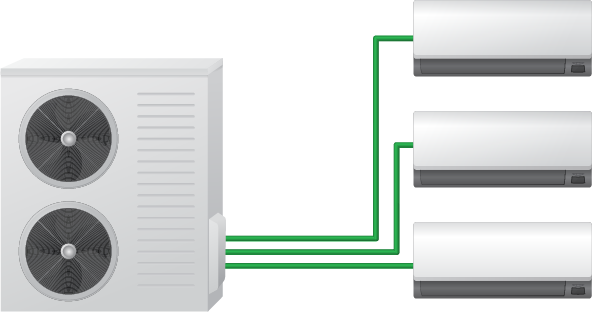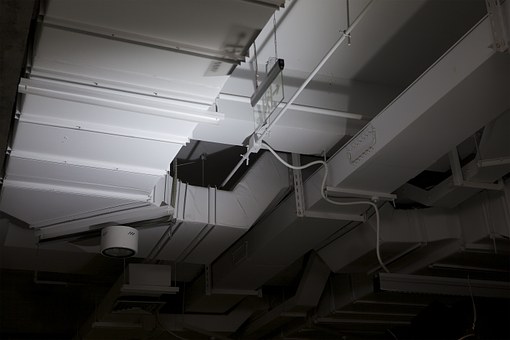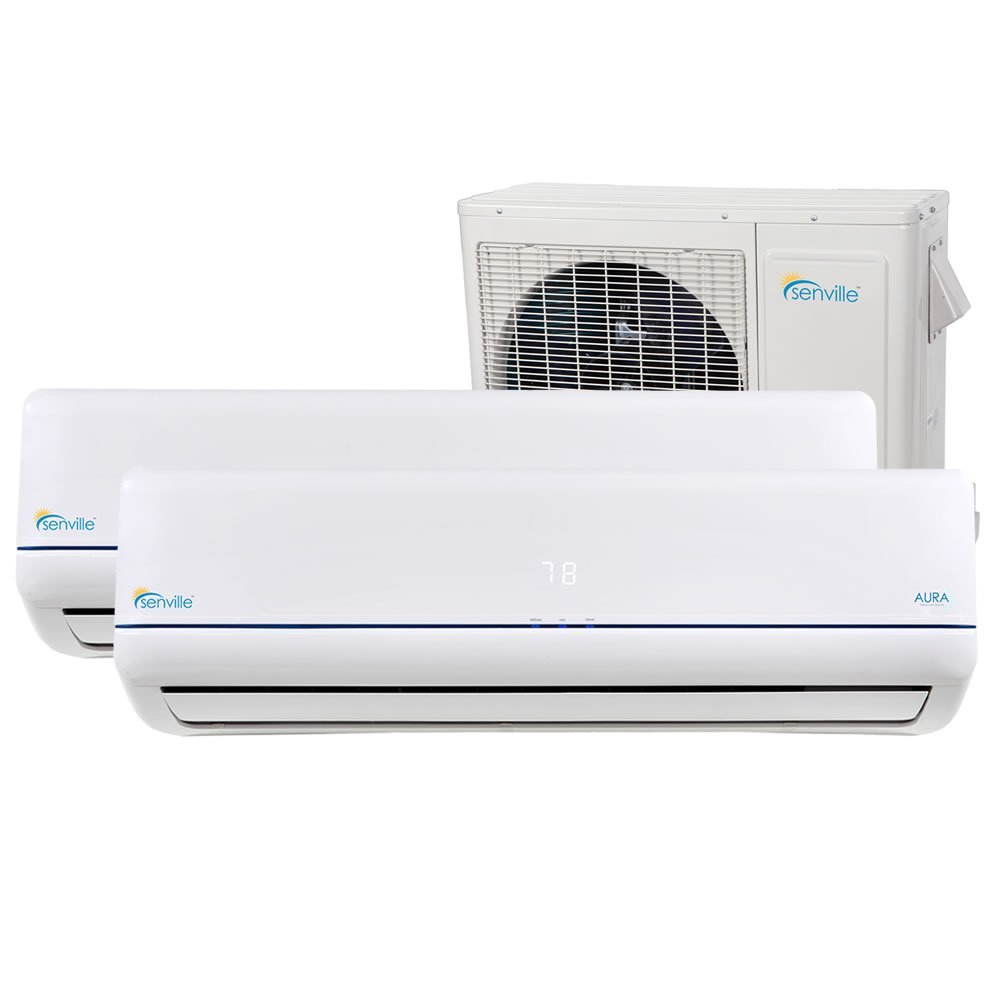Contents
– Monosplit, multi-split or ducted: definition
– For one piece: mono split
– For several rooms: multi-split or sheathable?
Once you have decided to install an air conditioner in your home, you will have to choose the type of air conditioner: mono split, multi-split or ducted. We will help you see more clearly and make the choice that suits your needs.
Monosplit, multi-split or ducted: definition
Before choosing your air conditioner, it is essential to know the different models’ characteristics on the market.
Mono split

A mono split air conditioner is of the split type; that is to say, it is composed of two units: an outdoor unit, which regroups the compressor, the outdoor exchanger coupled to a fan, rejecting the heat captured inside in cooling mode or capturing the heat from the outside air for heating mode, and finally the expansion valve. The mono split also includes an indoor unit composed of an exchanger and a fan that cools or heats the air depending on the mode chosen.
The indoor unit can be wall-mounted, console, or cassette type.
Multi-split

A multi-split air conditioner is also a split system with one outdoor unit but several indoor units. These indoor units can be connected to a single outdoor unit: this is called multi-split. Generally, a multi-split can be composed of two to four indoor units. Two indoor units are called bi-split, three are called tri-split, and four are called quadri-split. Some manufacturers can offer solutions with more units, five to six, but rarely more.
Ducted

A ductable air conditioner is often of the split type, i.e., an outdoor unit and an indoor unit. Still, it can also be a monobloc, i.e., there is only one unit grouping all the components.
The ductable, as its name indicates, is a device intended to be ducted. The ductable unit is concealed in false ceilings or attics and through a network of ducts and will distribute the treated air into the desired rooms where there will be only one apparent air outlet.
For a single room: mono split
If you only want to treat one piece, the ideal system is the mono split, no question about it! The other two are designed to process several parts simultaneously. The advantage of a mono split is that in case of failure of the external unit, if other parts are equipped with a mono split, they will not be affected by the failure, which is not the case with a multi-split or a gainable one.
For several rooms: multi-split or gainable?
To treat several rooms, it is better to discard the mono split because, in 4 rooms, for example, this implies having 4 external units, which is not necessarily aesthetic. It is, therefore, necessary to choose between multi-split and sheathing.
The advantages of the ductable
The advantage of the ductable is to be almost invisible by having only one air outlet per room for air supply and a return air grille in a corridor, for example. On the other hand, it is necessary to have a false ceiling or attic for the passage of air distribution ducts.
Besides, it will be required to provide for the doors or transfer grilles to be undercut so that you can take the supply air in through the return air grille (otherwise, you will end up with over-pressurized rooms). If the calibration is not sufficient, there is also a risk of noise generation caused by air passage.
Another positive point of the ductwork is that since an aeraulic network connects each room, there is no refrigerant circulating throughout the house, which reduces the amount of fluid. This is a double advantage: firstly, your installation is more environmentally friendly. Secondly, the quantity is less; you have more chance of not being forced to have a periodic tightness check.
The advantages of multi-split
Multi-split is also very suitable for this type of installation. This time, no need for an attic, but the indoor units will be visible. The regulation is even simpler because each indoor unit is independent. A multi-split system is less expensive than a ductable system.
To conclude
Finally, the choice between the two systems is more about the aesthetic aspect: whether you want to have exposed interior units or you prefer hiding them.

